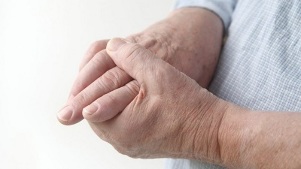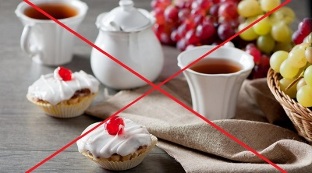
Gout was scientifically confirmed in 1865. Thomas Sendegum described the disease in his book, A Treatise on Gout, in which he described the signs, symptoms, and attacks of the disease he had been experiencing for 30 years.
In the time of Hippocrates it was called the "disease of kings". The causes are taken into account: excessive and indiscriminate consumption of food and alcohol.
What is gout
Gout is a pathology associated with salt deposition in the joints and kidneys, and is characterized by severe pain in these areas. The progression of the disease leads to recurrent and increasing attacks, which leads to the formation of tophi. These are nodules that lead to a change in the shape of the joints. Urolithiasis and renal failure are constantly developing.
Diagnosis is performed in the form of collecting synovial fluid and detecting urate in it. X-rays of the affected joints are also taken. When it alleviates inflammation, normalizes the diet, as well as lowers the acid in the urine, it can lead to positive results in treatment.
The disease is more common in men after the age of 40. Female pathologies are observed in the postmenstrual period. Joint damage occurs throughout the body, but most commonly on the legs.
Main causes of gout:
- heredity;
- eat food with purine in large quantities;
- poor excretion of uric acid from the body;
- catabolism of purine nuclei.
Principles of the Nutritional Diet
The development of gout depends on metabolic disorders in the body. For treatment, diet is an effective way. Good nutrition should be monitored daily. The main principle of a gout diet is to reduce salt in the blood. With its excess, the kidneys will not be able to work on their own. Failure to adhere to the diet can lead to relapse. An attack of pain can begin at any time. This often happens at night. If you do not follow a diet, the disease can progress and spread to all joints.
Treatment should be done at home. It involves adhering to a balanced diet. This is considered a basic and effective method. The menu is compiled by a physician who takes into account the individual characteristics of the patient. Diet is necessary to reduce uric acid levels.
Characteristics of a diet for gout

Purines should not be included in the composition of food on a gout diet, they contribute to the accumulation of acids. Purines are found in meat and fatty foods. Therefore, people with gout are advised to consume more vegetarian meals. Recipes do not include expensive ingredients, and the cooking technique is not complicated. But it is important to combine only the allowed foods.
Nutritional therapy can help treat gout symptoms at home.
Eating fatty and spicy foods leads to an attack associated with an increase in uric acid and severe pain fast enough. For example, drinking too much coffee that contains large amounts of purines can cause relapse. High-risk foods include alcohol, beer, sodas, and even grapes. They are completely excluded from the diet of a sick person.
To quickly remove purines from the body, the patient is prescribed a heavy drinking regimen. The amount of fluid consumed daily reaches 2. 5 liters. In case of urolithiasis, water with alkali and sodium bicarbonate is needed. It is possible to achieve neutralization of urine with an excess of plant proteins and citrus fruits in food.
Diet for gout on the legs
The gout diet should be monitored constantly. Since the treatment is carried out at home, a person suffering from the disease must have the strength of will and not violate the developed menu. Based on the patient's condition, an individual menu is created with allowed and forbidden products. Dishes can be delicious and varied despite their simplicity. The diet for gout on the legs has no very strict restrictions, but it should satisfy the sick body and promote a healthy lifestyle.

Dietary errors in the disease:
- eat purine-containing foods;
- alcohol abuse;
- lack of fluid in the diet;
- large amounts of animal fats;
- excessive consumption of animal proteins;
- table salt and pickles;
- scarce amount of vegetables and fruits in the daily diet.
Allowed and forbidden foods on the anti-gout diet
On an anti-gout diet, the patient, in addition to the main treatment, must also know about the permitted and prohibited foods. It is impossible to cure this disease or eliminate the symptoms without following the rules in the diet.
Prohibited Products:
- bakery products, ie rich products;
- meat (beef, lamb, pork, sausages);
- seafood (fatty species);
- salty and spicy milk;
- legumes;
- vegetables (sorrel, mushrooms);
- fruits (grapes, raspberries, figs);
- mayonnaise;
- confectionery;
- animal fats;
- alcoholic beverages;
- black tea, coffee;
- sauces (mustard, horseradish);
- spices and herbs.
Pay attention!The above products should not be consumed or added to the patient's food!
At first glance, the menu against gout may seem boring and tasteless. In fact, that is not the case.
There is a list of products allowed for consumption without health risks:
- bakery products - unpleasant pastries;
- meat - rabbit and chicken;
- cooked fish meat (low fat varieties);
- eggs (1 piece per day);
- dairy products (non-fat and unsalted);
- are not legumes;
- vegetables (potatoes, carrots, onions, garlic, tomatoes);
- fruits (green apples, apricots, tangerines);
- vegetable fats;
- fruit teas, natural juices from approved products.
You can adjust your diet to seeds and nuts:
- nuts;
- cedar;
- almonds;
- hazelnuts;
- pistachios.
Peanuts contain a lot of purines and should therefore be eliminated from the diet.
This is interesting!There was a debate among scientists about the use of tomatoes in a patient's diet. Finally, they contain trace amounts of oxalic acid. It turned out that red vegetables are harmless, but on the contrary, they are useful due to antioxidants and phytoncides. They remove the inflammation that is common for gout. It follows that tomatoes can be eaten with gout in any quantity.
Contraindications for gout

The most popular food has contraindications for an anti-gout diet. Due to chronic pathology, you can and should get used to leaning dishes, as they are aimed at relieving symptoms and significantly reducing pain. The diet must always be adhered to. Because one cup of coffee or grapes can cause an attack of pain.
During the period of worsening gout, medications are used with adherence to diet. Bed rest is also required. All this stops inflammatory processes. When preparing meals for a patient, it is better to keep a table with food allowed and forbidden in a visible place.
Limit meat and fish consumption to twice a week. According to the doctor's recommendation, the fish should be eaten with gills and shells. These fish by-products perfectly remove toxins from the body. In case of an attack of pain, the use of these products is delayed for several weeks.
Semi-finished and canned foods are categorically contraindicated. Diet no. 6 prohibits the use of broth. Finally, soups and borscht are prepared on their basis. The fact is that this exception is quite justified, due to the addition of various spices and seasonings that can cause an attack. It would be correct to cook the meat separately and use the soup under the vegetables as a soup. During the cooking process, the water is drained and changed several times. This reduces the concentration and removes purines from the composition.
Gout Diet: Menu of the Week
The disease cannot be cured, especially if the pathology is accompanied by diabetes or obesity. To reduce relapse and worsening of gout, a special diet is used - table number 6.

The anti-gout diet can be followed all the time, even though the menu is designed for a week. The diet is developed by the attending physician.
There may be several options for such a diet, which do not differ much from each other. The process uses conventional cooking technology.
Monday
- tea with cranberry syrup, boiled egg, tomato salad, rye bread;
- freshly squeezed apple juice, stewed vegetables;
- beet salad, boiled turkey, stewed pumpkin, compote;
- boiled potatoes with cheese, salad with cabbage, rosehip tincture.
- kefir.
Tuesday
- fresh cheese pudding with cream, green tea with honey;
- bran biscuits, chicory drink;
- noodle soup with vegetables, steamed chicken cutlets, fruit drink;
- vegetable stew, compote;
- cheese milk.
Wednesday
- pancakes with zucchini, porridge with buckwheat in milk, tea;
- green apple;
- vegetable and rice soup, boiled cod, beet salad, carrot juice;
- buckwheat with stew, apple juice, biscuit liver;
- decoction of wheat bran.
Thursday
- borscht without meat, milk, croutons;
- toast with cheese, chamomile tea;
- mashed potatoes with meatballs, potato pancakes, pancakes, compote;
- roasted zucchini, fruit salad, milk tea;
- fermented baked milk.
Friday
- oatmeal, vegetable salad, cherry juice;
- smoothie of watermelon, lemon, strawberry and pear, bread;
- mashed potatoes, rabbit stew, cabbage salad, tea;
- boiled egg, barley soup, jelly;
- baked apple with cottage cheese, rosehip tea.
Saturday
- wheat porridge, chicory drink;
- gingerbreads with kefir;
- boiled chicken with buckwheat, eggplant caviar, tea;
- diet pilaf, cucumber salad, bread, jelly;
- varenets.
Sunday
- casserole with cottage cheese, pancakes with cottage cheese, tea;
- omelet with quail eggs (4 pcs. );
- cheese puree soup, garlic toast, pomegranate tea;
- rice with stewed vegetables, beet salad;
- yogurt.
This is a general menu without forbidden food for people who have gout. A balanced and complete diet allows you to use it for a long time. In order to achieve a greater effect, it is necessary to spend the days of fasting.
Gout Diet: Nutritionist Reviews

The review of the professor of the Department of Gastroenterology and Dietetics is as follows. If drug treatment is ineffective, a diet for gout is the main treatment.
The severity of the process affects dietary approaches in the treatment of patients, namely:
- seizure frequency;
- plasma uric acid levels;
- body weight of the patient.
The amount of purines, fats, proteins, sodium salts and alcohol in the diet should be reduced to a minimum.
Diet can quickly reduce plasma uric acid and return to normal levels. Effective and healing action based on natural ingredients.














































































